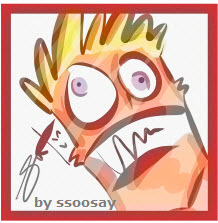
Don’t get loony over providing proper credit for research information found on the web. Following are example how to credit different materials from websites.
But, to make extra sure, ask your instructor to approve the examples given.
1. Almanac Articles
Article title in quotation marks. Website title.
Copyright date and company name.
Access date and full URL in <angle brackets>.
Example:
© 2000–2006 Pearson Education, publishing as Fact Monster.
24 Aug. 2010 <http://www.factmonster.com/ipa/A0765967.html>.
2. Feature Articles
Author’s name, last name first.
Article title in quotation marks. Website title.
Copyright date and company name.
Access date and full URL in angle brackets.
Example:
© 2000–2006 Pearson Education, publishing as Fact Monster.
24 Aug. 2010 <http://www.factmonster.com/spot/kosovo1.html>.
3. Encyclopedia Articles
Article title in quotation marks.
Encyclopedia name (in italics). (Copyright date) on Website title.
Website copyright date and company name.
Access date and full URL in angle brackets.
Example:
© 2000–2006 Pearson Education, publishing as Fact Monster.
24 Aug. 2010 <http://www.factmonster.com/ce5/CE047236.html>.
4. Dictionary Entries
Entry title in quotation marks.
Dictionary name (in italics)
(Copyright date) on Website title.
Copyright date and company name
Access date and full URL in angle brackets.
Example:
© 1997 by Random House, Inc., on Fact Monster.
© 2000–2006 Pearson Education, publishing as Fact Monster.
24 Aug. 2010 <http://www.factmonster.com/ipd/A0515599.html>.
5. All other articles:
Article title (if possible) in quotation marks.
Feature Type (in italics). Website title.
Copyright date and company name.
Access date and full URL in angle brackets.
Example:
Ask the Editors. Fact Monster.
© 2000–2006 Pearson Education, publishing as Fact Monster.
24 Aug. 2010 <http://www.factmonster.com/askeds/3-26-99askeds.html>.
 |
Janice VanCleave’s Guide to More of the Best Science Fair Projects |